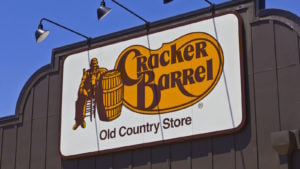Unsurprisingly, many restaurants, including the biggest chains, are still recovering from the devastation. Another complicating factor has been the sharp rise in inflation coming out of the pandemic, which forced many restaurants to raise prices and further alienate customers. The end result has been soft financial results and depressed share prices. However, glimmers of hope are starting to emerge for the sector.
So now could be a good time to pick-up stocks while they’re on sale, such as these three most undervalued restaurant stocks to buy in July 2024.
McDonald’s (MCD)

McDonald’s (NYSE:MCD) stock looks enticing at current levels. Shares of the Golden Arches are down 15% this year and close to a 52-week low. Also, the stock trades at 21 times future earnings estimates, which is below the historic average for the company. Throw in a quarterly dividend payment of $1.67 a share, for a yield of 2.66%, and MCD stock looks like good value right now if not undervalued.
Speaking of value, McDonald’s is in the midst of bringing back its popular $5 value meal. It relaunched on June 25 and runs for one month before it is discontinued again. The short-term promotion includes a choice of a McDouble or McChicken sandwich, small french fries, four-piece Chicken McNuggets and a small soft drink for only five bucks. The meal is expected to give the company’s earnings a lift. Some analysts are encouraging McDonald’s to make this value meal permanent.
Analysts see more upside ahead for MCD stock, with the median price target on the shares 23% higher than current levels. This makes McDonald’s an undervalued restaurant stock worth considering.
Cracker Barrel (CBRL)

Investors hunting for a really beaten down restaurant stock to bottom fish should consider Cracker Barrel (NASDAQ:CBRL). The company’s share price is down 50% on the year and sitting right at a 52-week low after announcing in May that it is cutting its quarterly dividend payment by 80%. CBRL stock is currently trading at 14 times forward earnings estimates.
The dividend cut lowered Cracker Barrel’s distribution to 25 cents from $1.30, and the move has gone over like a lead balloon with investors. Previously, Cracker Barrel had one of the highest yielding dividends at 9.08%. However, after the cut, the dividend still has a decent yield of 2.54%, which is higher than most publicly traded companies. Another reason to be optimistic is that Cracker Barrel is overhauling its brand and stores as part of a multi-year $180 million revitalization effort.
Notably, analysts’ median price target is 40% higher than the shares current trading level.
Restaurant Brands International (QSR)
Another down on its luck stock to consider is Restaurant Brands International (NYSE:QSR). The parent company of Burger King, Popeyes and Firehouse Subs has seen its share price decline 10% this year. Over five years, QSR stock has registered no gain (down 0.93%). The shares are currently trading at 17 times future earnings estimates and offer investors a quarterly dividend of 58 cents a share, for a yield of 3.33%.
As with the other companies mentioned, management at Restaurant Brands is working to turn around the fortunes of its chains and stock. In particular, the company is undertaking a major refresh of Burger King, remodeling restaurants and spending more money on advertising to drive customer traffic. Restaurant Brands shelled out $1 billion to buy Burger King’s largest U.S. franchisee, Carrols Restaurant Group, in a deal aimed at helping the chain renovate its locations faster.
The median price target on QSR stock among 18 analysts is 23% higher than the current share price.
On the date of publication, Joel Baglole did not have (either directly or indirectly) any positions in the securities mentioned in this article. The opinions expressed in this article are those of the writer, subject to the InvestorPlace.com Publishing Guidelines.
On the date of publication, the responsible editor did not have (either directly or indirectly) any positions in the securities mentioned in this article.
Joel Baglole has been a business journalist for 20 years. He spent five years as a staff reporter at The Wall Street Journal, and has also written for The Washington Post and Toronto Star newspapers, as well as financial websites such as The Motley Fool and Investopedia.
